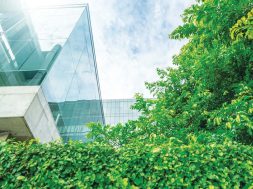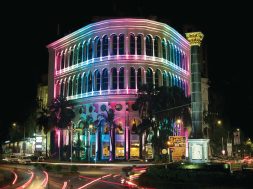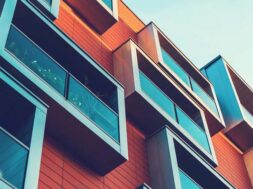
The concepts and principles of sustainability is catching up fast with India, and fortunately for the proponents of Green Building, many builders across the country are taking a conscious decision to ensure their buildings have what it takes to be sustainable and “green”
How does a Green Building impact a Builder?
According to a research conducted by the US Green Building Council or USGBC, the top two reasons for a builder to opt for a more sustainable construction are: Client demand (35%) and Market demand (33%).
The global green building market grew in 2015 to $ 260 billion, including an estimated 20 per cent of all new U.S. commercial real estate construction. This trend is expected to intensify in the coming years, both in the US and internationally.
Commercial building owners and managers will invest an estimated $ 960 billion globally between now and 2023 on greening their existing built infrastructure. Major priority areas include more energy-efficient heating, ventilation and air conditioning, windows, lighting, plumbing fixtures, and other key technologies. As the industry standard, and the recognised leader in innovative design, LEED for Existing Buildings and Maintenance is poised to expand exponentially as a result of this near trillion-dollar investment in sustainable design.
It will not be surprising if the Indian Builders would significantly start adopting green Building practices themselves, especially with the Indian Government’s support.
While the Environment ministry headed by the Union Minister for Environment and Forests, Prakash Javadekar is formulating a set of standard guidelines for giving environmental clearances to real estate sector, this should be recognised as a signal to scale up energy efficient and green buildings in India.
Environmental regulations will push the demand for green buildings, say experts. And the residential real estate sector is the biggest focus area in this regard.
According to Dodge Data & Analytics World Green Building Trends 2016 SmartMarket Report, by 2018 the green building industry in India will grow 20 per cent driven largely by environmental regulations and demand for healthier neighbourhoods. Findings in the report point out that new, high-rise residential communities and mixed-use development are expected to be the top three sectors for green building growth in India.
With the growing interest in Green Building from all stakeholders, the Indian home buyers are also becoming conscious of the benefits and their curiosity can only bring a positive impetus to the Green Building movement in India.
Depletion of natural resources is another a very important contributory factor towards why Indian Builders are looking at sustainability as an option they cannot take for granted any longer. Sustainability is not added on to conventional buildings but it lies in the approach of designing and constructing. Buildings account for up to 40% of the total energy consumption in India, and commercial and residential real estate combined will account for more than 2000 TWH of energy consumption by 2030.
Use of natural building materials can go a long way in helping the builder achieve his sustainability targets for his projects. Clay based building materials like clay hollow blocks can be exceptionally useful to the builders and home owners a like for their numerous advantages.
Wienerberger views sustainability as an integral part of its business and an important factor for their success. For these reasons, the company has firmly anchored sustainability in their corporate strategy. A house made of Wienerberger building materials is an investment for coming generations. The core of their sustainability strategy is the long service life of our products. At the same time, they implement measures to reduce the environmental impact of the production processes. Their activities are focused not only on reducing energy consumption, but also on improving our ecological footprint by using fewer raw materials and increasing the use of recycled products.
Right from procuring raw materials, to the production methodology and the products that Wienerberger offer, are all bound by principles of sustainability. Some of the initiatives in this respect include:
• Disilting of clay tanks
• Use of locally available products
• Use of waste products from other industries
• Efficient use of biomass and other environmentally friendly fuels in manufacturing.
Apart from these, the company continuously recycles heat and energy in the production process and systematically adopt various conservation projects in our plant on a regular basis.
Wienerberger products (Porotherm HP, THERMOBRICK) has been rated by the Indian Green Building Council (IGBC) and GRIHA (Green Rating For Integrated Habitat Assessment) developed by TERI (The Energy and Resource Institute) two of the premium organisations dealing with green building in India.
For more details, www.wienerberger.in
49
Cookie Consent
We use cookies to personalize your experience. By continuing to visit this website you agree to our Terms & Conditions, Privacy Policy and Cookie Policy.









